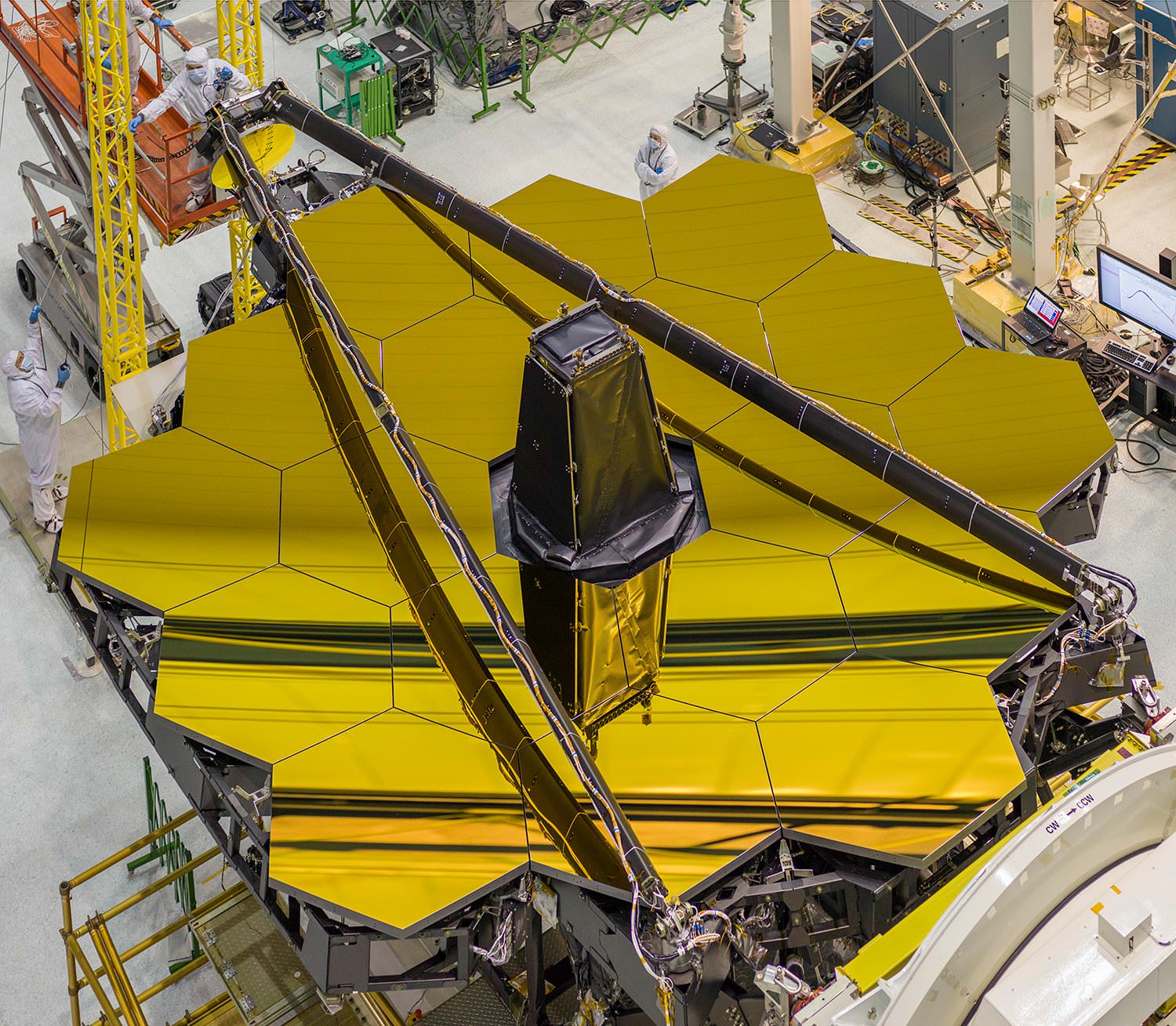NASA has some high hopes for the
James Webb Space Telescope
, which finished the "cold" phase of its construction at the end of November 2016. The result of 20 years of engineering and construction, this telescope is seen as Hubble's natural successor. Once it is deployed in October of 2018, it will use a 6.5 meter (21 ft 4 in) primary mirror to examine the Universe in the visible, near-infrared, and mid-infrared wavelengths.
All told, the JWST will be 100 times more powerful than its predecessor and will be capable of looking over 13 billion years in time. To honor the completion of the telescope, Northrop Grumman - the company contracted by NASA to build it - and Crazy Boat Pictures teamed up to produce a short film about it. Titled "
Into the Unknown – the Story of NASA's James Webb Space Telescope
", the video chronicles the project from inception to completion.
The film (which you can watch at the bottom of the page) shows the construction of the telescope's large mirrors, its instrument package, and its framework. It also features conversations with the scientists and engineers who were involved and some stunning visuals. In addition to detailing the creation process, the film also delves into the telescope's mission and all the cosmological questions it will address.
In addressing the nature of James Webb's mission, the film also pays homage to the
Hubble Space Telescope
and its many accomplishments. Over the course of its 26 years of operation, it has revealed auroras and supernovas and discovered billions of stars, galaxies, and exoplanets, some of which were shown to orbit within their star's respective
habitable zones
.
On top of that, Hubble was used to determine the age of the Universe (13.8 billion years) and confirmed the existence of the
supermassive black hole
(SMBH) -
Sagittarius A*
- at the center of our galaxy, not to mention many others. It was also responsible for measuring the rate at which the Universe is expanding - in other words, measuring the
Hubble Constant
.
This played a pivotal role in helping scientists to develop the theory of Dark Energy, one of the most profound discoveries since Edwin Hubble (the telescope's namesake) proposed that the Universe is in a state of expansion back in 1929. So it goes without saying that the deployment of the Hubble Space Telescope led to some of the greatest discoveries in modern astronomy.
That being said, Hubble is still subject to limitations, which astronomers are now hoping to push past. For one, its instruments are not able to pick up the most distant (and hence, dimmest) galaxies in the Universe, which date to just a few hundred million years after the Big Bang. Even with "
The Deep Fields
" initiative, Hubble is still limited to seeing back to about half a billion years after the Big Bang.
[caption id="attachment_130519" align="aligncenter" width="580"]
Illustration of the depth by which Hubble imaged galaxies in prior Deep Field initiatives in units of the Age of the Universe. Credit: NASA and A. Feild (STScI)
[/caption]
As Dr. John Mather, the project scientist for the James Webb Telescope, told Universe Today via email:
Basically, the JWST will be able to see farther back to about 100 million years after the Big Bang, when the first stars and galaxies were born. It is also designed to operate at the
L2 Lagrange Point
, farther away from the Earth than Hubble - which was designed to remain in low-Earth orbit. This means the JWST will be subject to less thermal and optical interference from the Earth and the Moon, but will also make it more difficult to service.
With its much larger set of segmented mirrors, it will observe the Universe as it captures light from the first galaxies and stars. Its extremely-sensitive suite of optics will also be able to gather information in the long-wavelength (orange-red) and infrared wavelengths with greater accuracy, measuring the
redshift
of distant galaxies and even helping in the hunt for
extra-solar planets
.
[caption id="attachment_127799" align="aligncenter" width="580"]
A primary mirror segments of the James Webb Space Telescope, made of beryllium. Credit: NASA/MSFC/David Higginbotham/Emmett Given
[/caption]
With the assembly of its major components now complete, the telescope will spend the next two years undergoing tests before its scheduled launch date in October 2018. These will include stress tests that will subject the telescope to the types of intense vibrations, sounds, and
g
forces (ten times Earth's gravity) it will experience inside the
Ariane 5
rocket that will take it into space.
Six months before its deployment, NASA also plans to send the JWST to the Johnson Space Center, where it will be subjected to the kinds of conditions it will experience in space. This will consist of scientists placing the telescope in a chamber where temperatures will be lowered to 53 K (-220 °C; -370 °F), which will simulate its operating conditions at the L2 Lagrange Point.
Once all of that is complete, and the JWST checks out, it will be launched aboard an
Ariane 5
rocket from Arianespace's ELA-3 launch pad in French Guayana. And thanks to experience gained from Hubble and updated algorithms, the telescope will be focused and gathering information shortly after it is launched. And as Dr. Mather explained, the big cosmological questions it is expected to address are numerous:
Needless to say, NASA and the astronomical community are quite excited that the James Webb Telescope is finished construction, and can't wait until it is deployed and begins to send back data. One can only imagine the kinds of things it will see deep in the cosmic field. But in the meantime, be sure to check out the film and see how this effort all came together:
Further Reading: NASA - JWST
,
*Northrop Grumman*
 Universe Today
Universe Today
